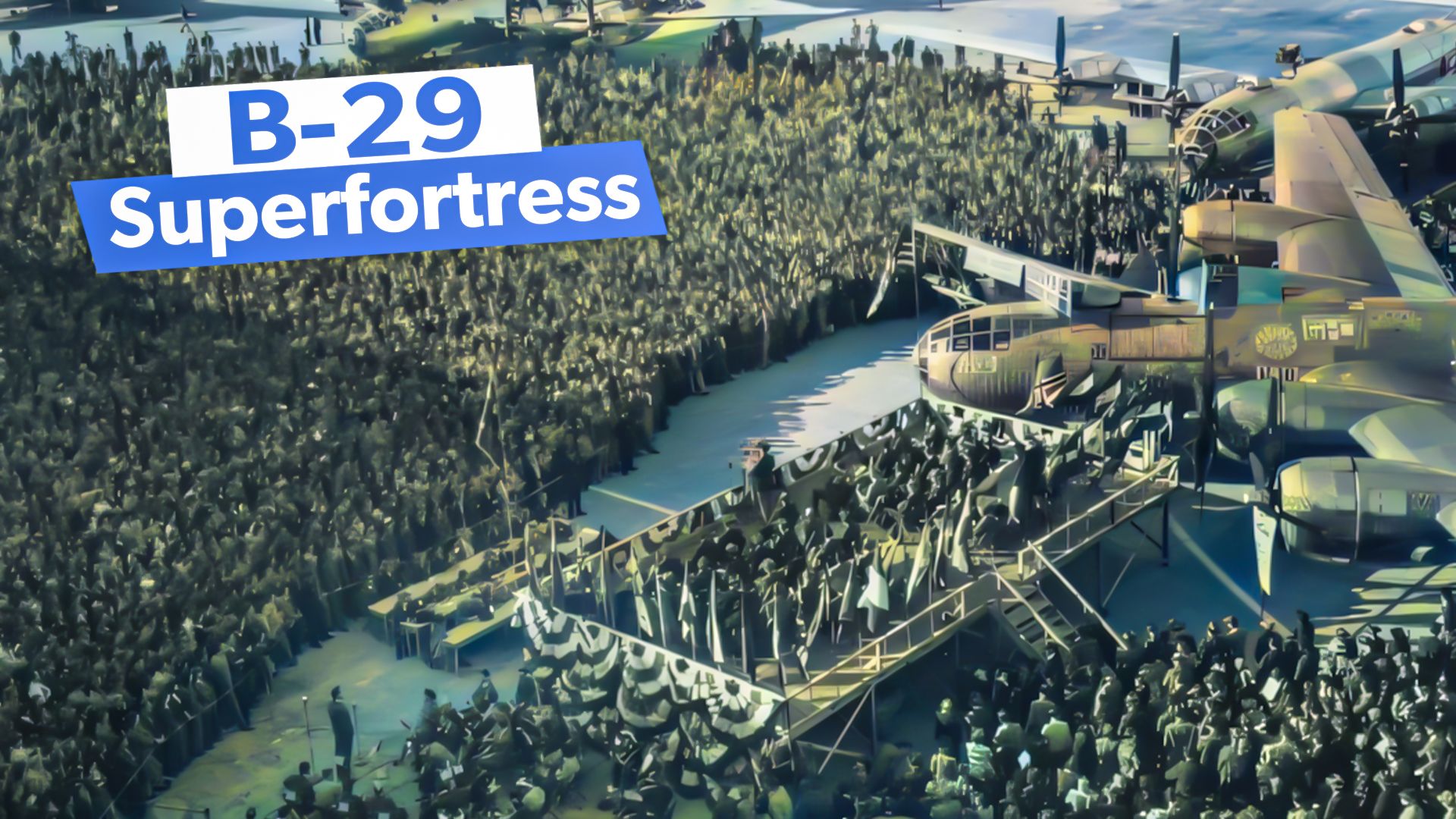The Boeing B-29 Superfortress heavy bomber is one of the most legendary warbirds of all time and rightfully so, as it brought WWII to a literally Earth-shattering halt thanks to the dropping of the atomic bombs on Hiroshima and Nagasaki, thus convincing Imperial Japan’s then-Emperor Hirohito to eschew the samurai code of Bushidō (武士道, “the way of the warrior”) and finally surrender to the Allies.
But that’s not the only reason the bomber was historically significant and influential. It also made history in a second war (or “UN-led police action,” to use an official euphemism for the Korean War), and in a major peacetime aviation event in between the two wars. Simple Flying now examines the B-29’s legacy in WWII and beyond, which, along with the B-17 Flying Fortress and the B-52 Stratofortress, established Boeing as the longtime dominant player in American heavy bomber/strategic bomber manufacturing.
Learn more about Boeing’s B-17 and B-52.
World War II: ushering in the Atomic Age
The two most famous B-29s of the bunch are, of course, “Enola Gay” and “Bockscar” (flown by Major [later Maj. Gen.] Charles W. Sweeney), which dropped the atom bombs “Little Boy” and “Fat Man” on August 6 and August 9, 1945, respectively.
But even before the “A-bombs,” the B-29 was already making history by devastating Imperial Japan via means of more “conventional” bombing raids at the behest of the two-fisted, cigar-chomping General Curtis Emerson LeMay (November 15, 1906 – October 1, 1990), the eventual commander of Strategic Air Command (SAC).
Indeed, one of these conventional attacks, a firebombing raid on Tokyo on the night of March 9-10, 1945 — code-named Operation Meetinghouse by the US Army Air Forces (USAAF) and known as the Tokyo Great Air Raid (東京大空襲, Tōkyō dai-kūshū) in Japan — was THE most destructive single air attack in human history (yes, that’s right, even more so than either of the A-bomb raids in terms of death toll), with more than 90,000 and possibly over 100,000 Japanese people killed, and one million left homeless.
Interwar period: supporting actor in the sound barrier saga
The “Superfort” was also a player in a major peacetime aviation milestone, albeit this time in a supporting role rather than a starring one.
On October 14, 1947, then-USAF Capt. (eventual retired Brig. Gen.) Charles Elwood “Chuck” Yeager (February 13, 1923 – December 7, 2020) immortalized himself by becoming the first human to break the sound barrier and attain supersonic speed, doing so at the controls of a Bell X-1.
Then-Capt. Yeager began his history-making flight from the belly of a mothership, and that mothership was none other than…yep, you guessed it: a B-29.
For a terrific firsthand account of this flight — and other delightful aviation stories — read Chuck’s bestselling autobiography (first published in 1985).
The B-29 was also rigged as a mothership for experimental so-called “parasite aircraft” such as the McDonnell XF-85 Goblin and Republic F-84 Thunderjets, and for good measure, it was used to develop the Airborne Early Warning program.
The Korean War: The Last Hurrah
So then, regarding that aforementioned “UN-lef police action,” the Superfort would be called into combat service again. much like several other piston-engine, prop-driven WWII veteran warbirds such as the P-51D Mustang and Vought F4U Corsair fighter planes.
Initially, the Boeing bomber was used in normal strategic day-bombing missions — just like in the skies over Japan during WWII — making short work of North Korea’s few strategic targets and industries. However, the advent of the Jet Age, more specifically the arrival of the fearsome Soviet-designed MiG-15 (NATO reporting name: “Fagot”) jet fighter, took its toll on the now-obsolescent bombers, and after 28 B-29s were shot down by the Communist “Fagots,” future B-29 raids were restricted to night missions, largely in a supply-interdiction role.
Nonetheless, the B-29 ended up dropping 200,000 metric tonnes (220,000 short tons) of bombs over the course of 20,000 sorties during the Korean War. Among the innovative then-new bombs employed by the Superfortress in that war were the 1,000 lb (450 kg) VB-3 “Razon” (a range-controllable version of the earlier Azon guided ordnance device) and the 12,000 lb (5,400 kg) VB-13 “Tarzon” MCLOS radio-controlled bombs.
A Superfort of the 91st Strategic Reconnaissance Squadron flew the last B-29 mission of the Korean War on July 27, 1953. One and a half years later, the B-52 would officially enter operational service with the USAF, thus carrying on the Boeing bomber legacy for decades to follow.


